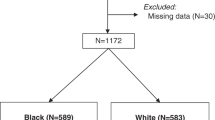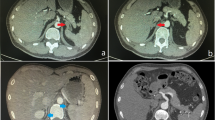Abstract
Approximately 50% of hypertensive patients are salt sensitive (they increase their Blood Pressure in response to sodium intake or volume expansion). Mechanisms underlying salt sensitivity are not completely elucidated although there is evidence that they may be genetically determined. The aim of this study is to establish the relation among some genetic polymorphisms of the renin–angiotensin system (RAAS) and the beta-3 subunit of the protein G and salt sensitivity. We studied 102 essential hypertensive patients, stage 1–2 and without target organ damage. Salt sensitivity was assessed by the rapid protocol of Weinberger. We determined by polymerase Chain reaction techniques the following polymorphisms: insertion/deletion (I/D) of the angiotensin-converting enzyme (ACE), A1166C of the angiotensin II type 1 receptor (AT1R), −344C/T and intron 2 conversion (IC) of the aldosterone synthase (CYP11B2), and C825T of the beta-3 subunit of the protein G (GNB3). 41 patients (40.19%) were salt sensitive. The distribution of the different polymorphisms was similar in both groups of patients, but subjects carriers of the W allele of the CYP11B2 IC polymorphism had a greater risk for salt sensitivity as compared with no carriers (37 of 41, 90.2% vs 4 of 41, 9.8%, OR 3.02, P<0.05). Although there is no association between salt sensitivity and the different studied genotypes of the RAAS and of the GNB3, our data show a greater risk for salt sensitivity among carriers of the W allele of the CYP11B2 1C polymorphism.
This is a preview of subscription content, access via your institution
Access options
Subscribe to this journal
Receive 12 digital issues and online access to articles
$119.00 per year
only $9.92 per issue
Buy this article
- Purchase on SpringerLink
- Instant access to full article PDF
Prices may be subject to local taxes which are calculated during checkout
Similar content being viewed by others
References
Kawasaki T, Delea CS, Bartter FC, Smith H . The effect of high-sodium and low-sodium intakes on blood pressure and other related variables in humans subjects with idiopathic hypertension. Am J Med 1978; 64: 193–198.
Weinberger MH et al. Definitions and characteristics qof sodium sensitivity and blood pressure resistance. Hypertension 1986; 8 (Suppl. II): II-I27–II-134.
Sullivan JM, Ratts TE . Sodium sensitivity in human subjects. Hemodynamic and hormonal correlates. Hypertension 1988; 11: 717–723.
Weinberger MH . Salt sensitivity of blood pressure in humans. Hypertension 1996; 27 (Part 2): 481–490.
Luft FC et al. Genetic influences on the response to dietary salt reduction, acute salt loading or salt depletion in humans. J Cardiovasc Pharmacol 1988;12 (Suppl. 3): S49–S55.
Miller JC, Weinberger MH, Christian JC, Daugherty SA . Familial resemblance in the blood pressure response to sodium restriction. Am J Epidemiol 1987; 126: 822–830.
Kojima S et al. The association between salt sensitivity of blood pressure and some polymorphic factors. J Hypertens 1994; 12: 797–801.
Hiraga H et al. Angiotensin I-converting enzyme gene polymorphism and salt sensitivity in essential hypertension. Hypertension 1996; 27 (Part 2): 569–572.
Giner V et al. Renin–angiotensin system genetic polymorphisms and salt sensitivity in essential hypertension. Hypertension 2000; 35 (Part 2): 512–517.
Poch E et al. Molecular basis of salt sensitivity in human hypertension. Evaluation of renin–angiotensin –aldosterone system gene polymorphisms. Hypertension 2001; 38: 1204–1209.
Dengel DR, Brown MD, Ferrell RE, Supiano MA . Role of angiotensin converting enzyme genotype in sodium sensitivity in older hypertensives. Am J Hypertens 2001; 14: 1178–1184.
Schorr U et al. G-protein beta-3 subunit 825T allele and response to dietary salt in normotensive men. J Hypertens 2000; 18: 855–859.
Anonymous. The sixth report of the Joint National Committee on prevention, detection, evaluation and treatment of high blood pressure. Arch Intern Med 1997; 157: 2413–2446.
Weinberger MH, Stegner JE, Fineberg NS . A comparison of two tests for the assessment of blood pressure response to sodium. Am J Hypertens 1993; 6: 179–184.
Rigat B et al. An insertion/deletion polymorphism in the angiotensin I-converting enzyme gene accounting for half the variance of serum enzyme levels. J Clin Invest 1990; 86: 1343–1346.
Shanmugan V, Sell KW, Shara BK . Mistyping ACE heterozygotes. PCR Methods Appl 1993; 3: 120–121.
Lind Paintner K et al. A prospective evaluation of an angiotensin-converting-enzyme gene polymorphism and the risk of ischemic heart disease. N Engl J Med 1995; 332: 706–711.
Bonnardeaux A et al. Angiotensin II type I receptor gene polymorphisms in human essential hypertension. Hypertension 1994; 24: 63–69.
White PC, Slutsker L . Haplotype analysis of CYP11B2. Endocr Res 1995; 21: 437–442.
Levine MA et al. Molecular cloning of beta 3 subunit, a third form of the G protein beta-subunit polypeptide. Proc Natl Acad Sci USA 1990; 87: 2329–2333.
Siffert W et al. Association of a human G-protein b-3 subunit variant with hypertension. Nat Genet 1998; 18: 45–48.
Galletti F et al. Evaluation of a rapid protocol for the assessment of salt sensitivity against the blood pressure response to dietary sodium chloride restriction. Am J Hypertens 1997; 10: 462–466.
Weinberger MH, Fineberg NS . Sodium and volume sensitivity of blood pressure. Age and pressure change over time. Hypertension 1991; 18: 67–71.
Don Y et al. Association between the C825T polymorphism of the G protein beta-3 subunit gene and hypertension in blacks. Hypertension 1999; 34: 1193–1196.
Brand E et al. The 825C/T polymorphism of the G-protein subunit beta-3 is not related to hypertension. Hypertension 1999; 33: 1175–1178.
Ishikawa K et al. Human G-protein beta-3 subunit variant is associated with serum potassium and total cholesterol levels but not with blood pressure. Am J Hypertens 2000; 13: 140–145.
Schunkert H et al. Association between a polymorphism in the G protein beta-3 subunit gene and lower renin and elevated diastolic blood pressure levels. Hypertension 1988; 32: 510–513.
Tamaki S et al. Genetic polymorphism of CYP11B2 gene and hypertension in Japanese. Hypertension 1999; 33 (Part 2): 266–270.
Komiya I et al. Lys 173 Arg and −344 T/C variants of CYP11B2 in Japanese patients with low-renin hypertension. Hypertension 2000; 35: 699–703.
Rossi E et al. −344C/T polymorphism of CYP11B2 gene in Italian patients with idiopathic low renin hypertension. Am J Hypertens 2001; 14: 934–941.
Brand E et al. Aldosterone synthase gene (CYP11B2) C-344T polymorphism in Caucasian from the Berlin salt-sensitivity trial (BeSST). J Hypertens 1999; 17: 1563–1567.
Brand E et al. Structural analysis and evaluation of the aldosterone synthase gene in hypertension. Hyper-tension 1998; 32: 198–204.
Author information
Authors and Affiliations
Corresponding author
Rights and permissions
About this article
Cite this article
Pamies-Andreu, E., Ramirez-Lorca, R., Stiefel García-Junco, P. et al. Renin-angiotensin-aldosterone system and G-protein beta-3 subunit gene polymorphisms in salt-sensitive essential hypertension. J Hum Hypertens 17, 187–191 (2003). https://doi.org/10.1038/sj.jhh.1001534
Received:
Revised:
Accepted:
Published:
Issue date:
DOI: https://doi.org/10.1038/sj.jhh.1001534
Keywords
This article is cited by
-
Sodium sensitivity of blood pressure in Chinese populations
Journal of Human Hypertension (2020)
-
Genetic susceptibility to salt-sensitive hypertension in a Han Chinese population: a validation study of candidate genes
Hypertension Research (2017)
-
Association of the angiotensin II type I receptor gene +1166 A>C polymorphism with hypertension risk: evidence from a meta-analysis of 16474 subjects
Hypertension Research (2010)
-
Novel Genetic Variants in the α-Adducin and Guanine Nucleotide Binding Protein β-Polypeptide 3 Genes and Salt Sensitivity of Blood Pressure
American Journal of Hypertension (2009)
-
Genetics of salt-sensitive hypertension
Current Hypertension Reports (2007)



